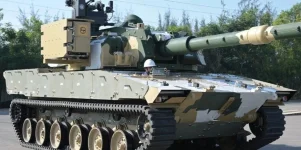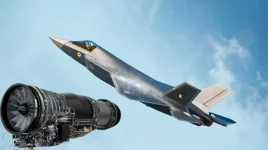- Views: 3K
- Replies: 17
India's Defence Research and Development Organisation (DRDO) is making significant strides in its Future Main Battle Tank (FMBT) program, developing both 120mm and 125mm smooth-bore gun systems for the upcoming Next Generation Main Battle Tank (NGMBT).
This dual-caliber approach highlights India's commitment to fielding a highly adaptable and potent main battle tank for the future.
Smooth-bore guns, known for their superior projectile velocity and penetrative power compared to rifled barrels, represent a technological leap for India's armored warfare capabilities.
By pursuing both 120mm and 125mm variants, DRDO aims to provide the Indian Army with flexibility in tailoring the NGMBT to diverse operational needs and evolving ammunition technologies.
This strategic decision allows India to leverage the advantages of each caliber. The 125mm gun, a staple in Russian-origin tanks currently in service with the Indian Army, offers formidable firepower and compatibility with a wide range of existing ammunition.
On the other hand, the 120mm gun, commonly found in Western tanks, potentially allows for better weight management and enhanced mobility, crucial factors in modern battlefield scenarios.
The smooth-bore design facilitates the use of advanced kinetic energy penetrators like APFSDS rounds, as well as high-explosive anti-tank (HEAT) projectiles, ensuring the NGMBT can effectively engage a wide array of targets on the battlefield.
The FMBT program envisions a future-ready tank platform, integrating modern technologies such as active protection systems, advanced composite armor, and enhanced situational awareness tools.
The development of these indigenous smooth-bore guns is a crucial step towards realizing this vision, ensuring the NGMBT is a fully capable and independent armored platform.
While the timeline for the final selection and testing of these guns remains to be seen, DRDO's simultaneous development of both calibers demonstrates a forward-thinking approach.
This strategy not only provides flexibility in equipping the NGMBT but also strengthens India's defence manufacturing capabilities and enhances its armored forces in a dynamic regional security environment.





